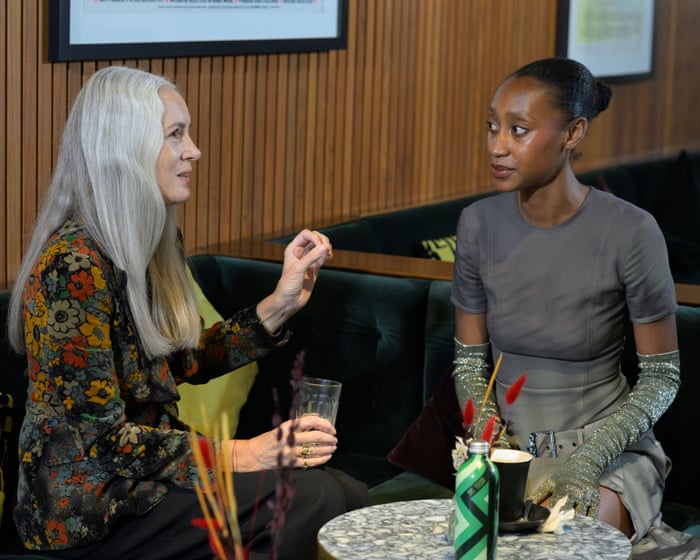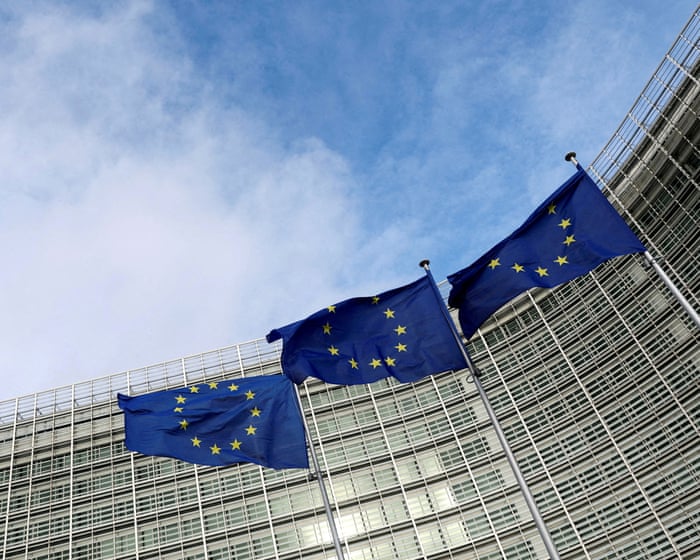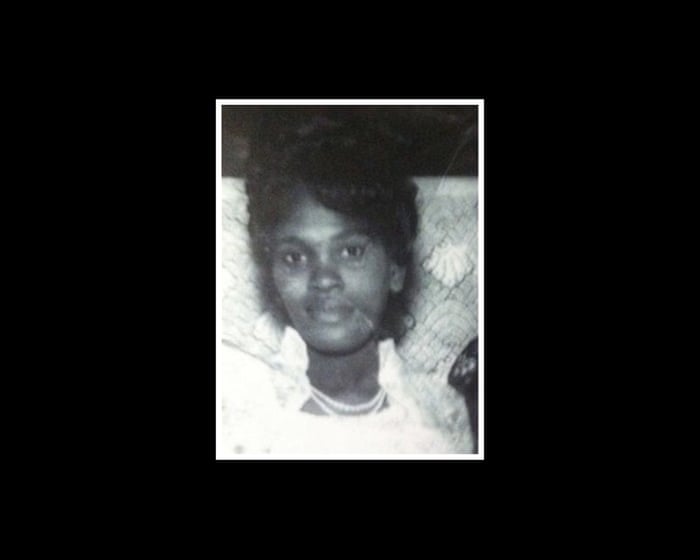It’s easy to imagine models living lives filled with glitz and glamour, who “don’t wake up for less than $10,000 a day.” But according to Danielle Mareka, a 27-year-old based in New York, and Dee O, a 62-year-old from London, the reality for most models is a constant struggle to get noticed.
That’s without even considering the ever-changing fashion world. Since Dee O started modeling in 1983, the internet and social media have revolutionized the industry. Models now have to adapt to new developments like AI models appearing in Vogue and the influence of GLP-1 weight-loss drugs on the sector. O and Mareka recently met to discuss their careers, both past and present.
How did you get into modeling?
Dee O: I came from an Irish immigrant working-class family and grew up in Birmingham. My boyfriend entered me into a Face of 1983 competition without telling me. I was around 17 or 18 at the time. Suddenly, I heard from Look Now magazine, inviting me to be part of the Birmingham finalists. I won the Birmingham final, so I went to London for a weekend with girls from all over the country, and they put us up in a hotel. I didn’t win Face of 1983, but the agency running the competition still offered to represent me. So I started commuting back and forth from Birmingham, taking coaches from Victoria at 2 a.m. after eating some awful sandwich.
Danielle Mareka: I was born in New York to Guyanese-American parents and grew up watching America’s Next Top Model. That really inspired me to become a model, but my family insisted I wait until college. I dabbled a bit in my teens, but if it interfered with school, it was a definite no. While studying public health at NYU, I ran track, and a teammate was into photography. That’s how it began—we took photos in a dorm room, and for fashion week, I’d search Instagram for casting directors or designers. Later, I joined WeSpeak, a boutique agency started by a model that focuses on models advocating for themselves.
How have your careers gone since then?
DO: Around 29, I drifted away from modeling and decided I needed a real job. I went to university and then worked in education. Later, my daughter, who’s now 27, started modeling and encouraged me to get back into it. I was really hesitant, but here I am five years later—I signed with Grey agency, which has a very diverse roster, and jobs still come in. I actually love it now because I don’t have the same stress I had when I was younger.
DM: After five years, I took a break from WeSpeak because I wasn’t sure if I’d peaked. I tried a more traditional, corporate agency for a year and a half, but we didn’t connect, and we both agreed to part ways. I returned to WeSpeak, and while I’m in London doing shows for a New York client, I’ve been looking for a UK agent. Many people don’t give feedback—they just say I’m not quite right for them.
DO: It’s always so vague! It’s frustrating because you want to grab them and say, “Just be honest with me! You’ve signed 20 other girls, and five of them look just like me.”
Dee, how has being a model changed since you started out?
DO: Back then, you didn’t talk to anyone; your agent handled everything—that’s why I gave them 20%. You just showed up on the day with a clean face and kept quiet. Now, many models are writers, stylists—no one is just one thing. Using social media and finding your own work is essential these days.
In 2020, Black representation in modeling felt like…There’s a sense that we’re seeing a renaissance, but now many Black models have been let go.
DM: I have a strong social media following, and during the pandemic, some of my posts went viral. Much of my career has come from being active online and reaching out to the right people.
Does modeling change how you view yourself?
DM: Certain photoshoots have made me question whether the team even likes my appearance, and whether I do. For a long time, I didn’t believe I was beautiful—it really affects you.
DO: It’s subtle, but constantly setting aside your own needs, desires, and identity takes a toll on your mental health over time. When I started in the early 80s, the industry was still influenced by a debutante culture and very class-conscious—I felt like an outsider. There’s also the personal aspect of comparing yourself to other women.
I suppose models are, by definition, seen and not heard. Does constantly having to conform to others’ wishes lead to people taking advantage of models?
DO: I witnessed some predatory behavior in the 80s, before the MeToo movement. I was fortunate because I was outspoken, so they tended to avoid me. But I sensed it. I also felt that if I had accepted certain dinner invitations or attended certain parties, I might have landed more jobs. Power was largely in the hands of men, and you definitely felt replaceable.
DM: I’ve always been very liberal. At NYU, I worked with Planned Parenthood and spoke about reproductive justice and women’s rights. But with my previous, more corporate agency, I became quieter about these issues, fearing I’d be dropped. Since then, I’ve collaborated with the Model Alliance, which is the closest thing we have to a union. They’ve been instrumental in passing the Fashion Workers Act in New York last year, offering models more protection. Even so, I’ve met models whose agencies asked them to sign additional agreements beyond the law. There are still those who exploit young people’s inexperience.
DO: Yes, it’s the naivety, the dream, and the desperation.
DM: When you join the worker council at the Model Alliance, they have you sign a document acknowledging that your agent might drop you for your involvement with the organization. I had no idea it was that serious or taboo.
I’ve never had Botox or plastic surgery and have resisted it.
The Fashion Workers Act is a significant achievement. Is progress being made in other areas?
DO: Runways still feature many stereotypical models—tall and sizes six or eight—with occasional exceptions. I’ve worked with designer Ashish Gupta, who intentionally uses a diverse range of models. His London Fashion Week show featured all dancers who moved around the catwalk, which I find exciting. I’m also pleased to see more attention on where clothing comes from, its environmental impact, and workers’ wages. I love fashion, but I’m a vintage and secondhand enthusiast, and I’m proud of that.
DM: Regarding Black representation in modeling, 2020 felt like a renaissance. After the Black Lives Matter protests, I was earning well and booking many campaigns, and it seemed like everyone was being represented. Now, it feels like things have regressed. Many Black models have been let go. Another issue on shoots is that stylists often aren’t trained to work with Black hair—I’ve ended up with heat damage as a result.
We often hear about the pressure on models to be thin. Have you experienced that?
DO: In my early days, I shared a flat with a girl who…She was naturally around a UK size 12 (US 8). She survived on apples, which ruined her teeth, and developed bulimia, all in an effort to get her agency to accept her and reach the size they demanded. Eventually, she became seriously ill, broke down, and returned home—that was the end of her story. I’ve never forgotten her, and she’s not the only one.
DM: I’ve had this figure for years, so I might not be as aware of the pressure to be thin since I already fit the mold. But when I first started out, I was much more muscular from running track. I remember being told in a meeting, “You’ll need to change your measurements,” and it shattered me mentally.
DO: It really affects your psyche. At the same time, you see so much more diversity in sizes and shapes now. But even the curvier girls seem to be pigeonholed—they still have to have that hourglass figure.
There are so many ways to alter your appearance now, from Botox to weight-loss injections. Have you noticed these making a difference?
DM: With weight-loss jabs, my curve model friends say there’s been a shift, and they’re getting fewer runway bookings.
DO: At one job, they used tape on my face to pull the skin back. I thought, if you don’t like my face, why not hire someone younger? I think they’re just as confused as we are. I’ve resisted Botox and surgery, but other models my age on shoots say, “Oh, I’ve had a little done.” It feels like a contradiction, though I understand it—sometimes I look in the mirror and think, “Maybe if I just…”
Are you concerned about your images being used in deepfakes or to train AI?
DM: The Model Alliance has included a clause in the bill requiring written consent from models. I do worry about my images being used, but it’s hard to control since posting on Instagram already makes you vulnerable.
Would you recommend modeling as a career?
DM: Yes, it’s incredibly rewarding—going to work is like dressing up and playing, which brings out your inner child. But if I had a child interested, I’d want them to be older; I wouldn’t want them starting at 15 or 16.
DO: With my daughter, I did what your parents did: insisted she finish college. I was a bit worried because I knew the industry, but she was determined. I’m glad she did it, and it’s wonderful that we now work together sometimes.
DM: I’d advise building an identity outside of modeling. For a long time, people recognized me from TikTok, and I let it become my only identity. I felt lost for ages.
DO: I’ve traveled the world—that alone makes it worth it. But you shouldn’t let it define you, because it can all disappear overnight.
Frequently Asked Questions
Of course Here is a list of FAQs about the topic You were made to feel replaceable based on the conversation between a 27yearold and a 62yearold model
General Thematic Questions
Q1 What is the main topic of this conversation
A Its a discussion between two models from different generations about aging beauty standards and the new pressure they feel from AIgenerated models
Q2 What does made to feel replaceable mean in this context
A It means that due to ageism in the industry and the rise of AI models can feel like they are easily disposable or no longer valuable
Q3 Why are a 27yearold and a 62yearold model talking together
A Their different ages provide unique perspectives on the same pressures showing that the fear of being replaced affects models at various stages of their careers
Questions on Aging Appearance
Q4 What are their views on procedures like Botox
A They likely discuss the pressure to use it to maintain a youthful look to stay relevant weighing the pros and cons for their careers and selfimage
Q5 Is shedding pounds just about weight loss
A Not entirely Its a metaphor for the constant pressure to change their bodies to fit industry standards as well as a literal discussion about health and appearance
Q6 How does aging affect a models career
A Traditionally opportunities can decrease with age but the 62yearold models presence shows a push for more diversity and longevity in the industry
Questions on Artistic Expression The Industry
Q7 What is artistic expression for a model
A Its about using their body face and presence to tell a story convey an emotion or be part of creative work beyond just selling a product
Q8 How is the modeling industry changing
A Its slowly becoming more inclusive of different ages and body types but its also being disrupted by technology specifically AI
Questions on Artificial Intelligence
Q9 How exactly is AI a challenge for human models




